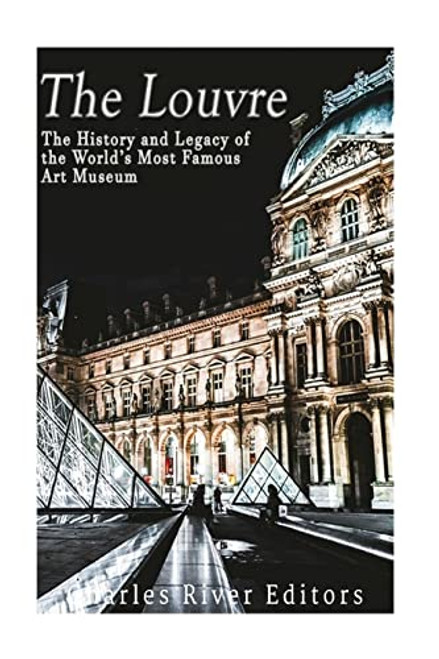*Includes pictures *Profiles the art departments and most famous works *Profiles the history of the site from medieval times to the present day *Includes online resources and a bibliography for further reading Keep good company - that is, go to the Louvre. - Paul Cezanne The Louvre: The very name conjures up scenes of art and elegance, and of long halls filled with beauty and people strolling through them whispering quietly among themselves about the glories they are witnessing. Even those who have never been to the Louvre know some of its most prized possessions, from ancient statues to Leonardo Da Vincis Mona Lisa. As the worlds largest museum, the Louvre is unquestionably the cultural highpoint of Paris, a city that has long been considered the cultural center of Europe. However, life is rarely as simple as one imagines, and the life of the Louvre is no different. While just about everyone is familiar with its history as an art museum, the Louvres history goes back over 800 years, and it used to have far different purposes, both as a medieval fortress and a palatial residence for French kings. The Louvre bore witness to mass murder during the French Revolution, and there have been countless accusations of theft and other questionable actions since its opening. Furthermore, the museum is also a classic example of beating ones swords into ploughshares, for it has been largely stocked through the conquests of war. Its first collection was put on display by a king who wanted to share his personal art collection with his subjects. Following the French Revolution, the Louvre became a place of ascetic refuge, where those burdened by daily life could go, often at no cost, and visit some of the most beautiful pieces of art in the world. While the power hungry Napoleon made war across the continent, he was also always on the lookout for beautiful and interesting items to send home to his people. Later, when rioters attempted to burn the building down, the museum portion of the palace survived, almost by miracle, and when the Nazis occupied Paris, they found that most of the items of value had been safely sent away. Ironically, when World War II was over, the museum became a safehouse for items stolen by the Germans from around the world, and a conduit to get the pieces back to their rightful owners. Even now, in the 21st century, the museum is serving as a bridge to peace and understanding; its latest gallery was designed to showcase Islamic art in the hope of bringing together people from different cultures. This is, to say the least, quite a change of pace for a fortress originally intended to fight off invaders. The Louvre: The History and Legacy of the Worlds Most Famous Art Museum chronicles the remarkable history of the museum and highlights some of its most important pieces. Along with pictures depicting important people, places, and events, you will learn about the Louvre like never before.
The Louvre: The History and Legacy of the Worlds Most Famous Art Museum
Createspace Independent Publishing Platform
MSRP:
Was:
Now:
$16.86 - $19.01
(You save
)
(No reviews yet)
Write a Review

Write a Review

Createspace Independent Publishing Platform
The Louvre: The History and Legacy of the Worlds Most Famous Art Museum
- SKU:
- UPC:
- 9781542943727
- Maximum Purchase:
- 2 units
- Binding:
- Paperback
- Publication Date:
- 2/6/2017
- Author:
- Charles River Editors
- Language:
- English: Published; English: Original Language; English
- Pages:
- 70

Rizzoli Electa
The Louvre: The History, The Collections, The Architecture
MSRP:
Was:
Now:
$89.83 - $101.48

Createspace Independent Publishing Platform
The HMS Wager: The History of the 18th Centurys Most Famous Shipwreck and Mutiny
MSRP:
Was:
Now:
$13.43 - $15.11

All the Beauty in the World: The Metropolitan Museum of Art and Me
MSRP:
Was:
Now:
$19.99 - $25.73

The Rise and Rise of the Private Art Museum (Hot Topics in the Art World)
MSRP:
Was:
Now:
$32.58 - $42.20

Back Bay Books
The Art of Invisibility: The World's Most Famous Hacker Teaches You How to Be Safe in the Age of Big Brother and Big Data
MSRP:
Was:
Now:
$13.24 - $21.16

Viking
A History of the Bible: The Story of the World's Most Influential Book
MSRP:
Was:
Now:
$22.91 - $44.24

Little, Brown Books for Young Readers
Finding Winnie: The True Story of the World's Most Famous Bear (Caldecott Medal Winner)
MSRP:
Was:
Now:
$14.45 - $23.56

HarperBusiness
Barbie and Ruth: The Story of the World's Most Famous Doll and the Woman Who Created Her
MSRP:
Was:
Now:
$14.21 - $21.11

Egmont UK
How To Solve The Rubik's Cube: Celebrating 50 years of the worlds most famous puzzle
MSRP:
Was:
Now:
$14.55 - $16.09
!
